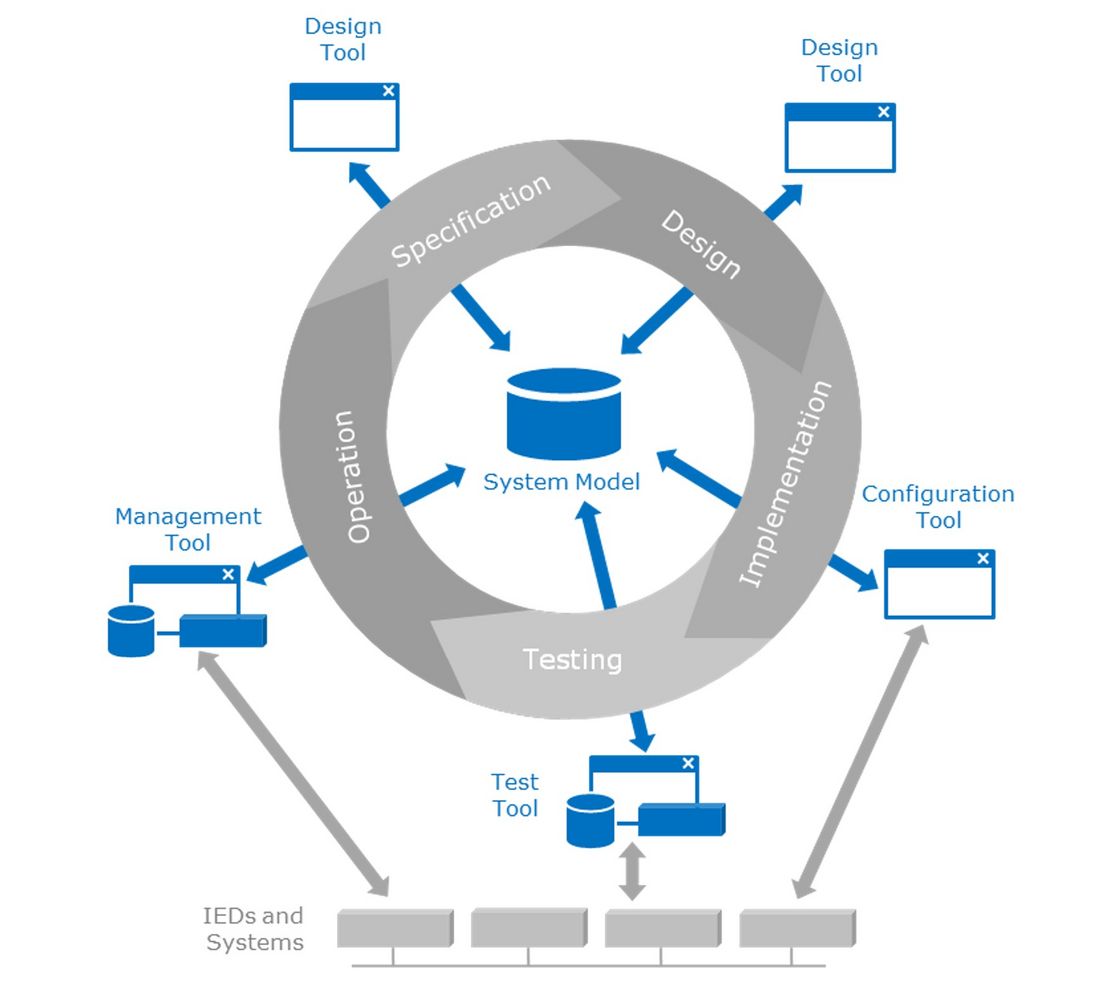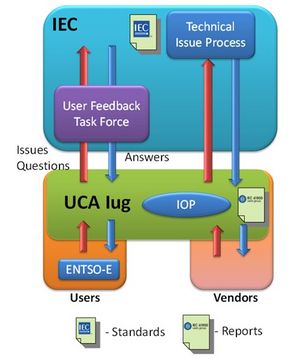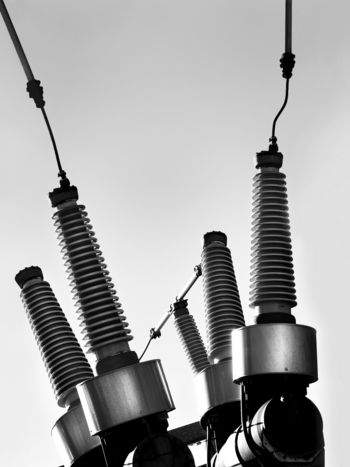IEC 61850 - Based substation automation systems – Users expectations and stakeholders interaction
The publication of IEC 61850 standard series started to replace the use of old proprietary and IEC 60870-5-103 based protocols in Digital Substation Automation Systems. Its main objective is to allow interoperability between Intelligent Electronic Devices of different vendors in one automation system and increase substation engineering efficiency. Its scope has lately extended beyond the limits of a substation. IEC 61850 aims to be THE standard applied in substations worldwide, as in many other domains.
1st Convenor
(BE)
G. HUON
2nd Convenor
(FI)
P. LINDBLAD
Secretary
(US)
P. MYRDA
R. LIPOSCHAK (US), D. MOERS (BE), B. CAFFERTY (IE), R. HUG (CH), B. KAPKAC (SE), Q. HONG (UK), J. HOLBACH (US), Y. YIN (CA), I. ROHLEDER (CH)
Corresponding Members: R. DIAS PAULO (PT), C. HOSU (RO), I. METS (EE), I. YOUNG (AU), M. PAULINOꭞ (BR)
Previously, CIGRE Working Groups have published reports related to IEC 61850 as follows:
- TB 466: Engineering Guidelines for IEC 61850 Based Digital SAS
- TB 329: Guidelines for specification and evaluation of substation automation systems
- TB 326: The introduction of IEC61850 and its impact on protection and automation within substations
- TB 584: Implications and benefits of standardized protection and control schemes
- TB 628: Document requirements throughout the lifecycle of DSAS
These have been considered by the Working Group in order not to repeat much of the statements of earlier published reports.
Nevertheless, during the first years using IEC 61850, several reports and position papers have been published pointing out particular difficulties of transmission users trying to design, configure, test and maintain IEC 61850 systems. In the beginning, IEC 61850 based systems were sold eagerly by vendors in order to get a rapid replacement of IEC 60870-5-103 based systems. However, due to limited interoperability of the IEC 61850 based products and the rather high complexity level of the standard and offered solutions, there were several projects experiencing a lot of challenges and compromises. The users were not happy with such a "trial-and-error" stage. It seemed that there was only a smallish number of specialists being able to solve the application challenges and the standard seemed to give too much flexibility so that the use of it affected the level of interoperability.
Structure and content of the Technical Brochure
The report gives the results of the Working Group examination about experienced challenges from early implementation cases of the IEC 61850 standard, as well as about user expectations and needed stakeholder interactions to improve the interoperability. It also gives some examples of work-around methods like users’ profile definition and implementation agreements.
A detailed description of the background, targets and scope of work of the WG can be found in chapter 1 “Introduction”.
The main part of the report concerns users’ expectations on the use of IEC 61850, which are described in chapter 2 “User Expectations”. Firstly, the main expectations on interoperability features of IEC 61850 are stated.

Figure 1 - a) Interoperability between two IEDs, b) Balancing between flexibility & interoperability
Then, user expectations concerning backward compatibility of IED products, software and communication buses are presented. These considerations are followed by user expectations for enhancement of substation engineering processes, including the processes for specification and configuration of DSAS. As IEC 61850 data models are significant, these are described in a separate sub-chapter. In matters on telecommunication, only a few specific expectations are identified. On the other hand, as the correctness of documentation is essential, several requirements and expectations related to the documentation are stated in the report. Testing seems to be the field which raises even more discussion around the user expectations and thus, the identified expectations related to testing are divided into several sub-chapters. Also, some expectations are mentioned regarding operation and maintenance of IEC 61850 substations. Finally, the WG views on specific expectations for process bus implementations are given.
Chapter 3 “Stakeholder interactions” starts by discussing the stakeholders and needed interactions in the standardization process. Examples thereof cover IEC standard development, user profile development as well as conformance and interoperability verification testing. Interactions between different stakeholders differ depending on the used contracting method, as per the stakeholders’ roles in these. Two rather “opposite” types of substation implementation and contracting methods are described, i.e. in-house approach with frame agreements vs. “turn-key” contracting. Similarly, there are differences between stakeholder interactions depending on whether the DSAS maintenance is performed in-house or outsourced, of which some examples are mentioned.
In chapter 4, the report concludes that IEC 61850 is a complex standard to implement into all the needed products and tools. Thus, some challenges have been encountered in the first years of application of the standard. These challenges have raised several issues by the end users as improvement expectations to the implementation of the IEC 61850 standard. Even though a lot of work and efforts have already been done in improving products and tools, as well as in improving skills, methods and procedures, protection and control engineers still need some more time to further develop and mature the application of the standard, in order to be able to gain the majority and the most significant parts of the expected features and benefits for the end users, of which interoperability and ease-of-use are the most essential ones.
At the end of the report, some examples / use cases are presented in the Annexes. These comprise an example of GOOSE monitoring and the approaches of some utilities how they have adopted IEC 61850 in their DSAS implementation projects as well as in their operation and maintenance processes.
Conclusions
The user main expectations regarding IEC 61850 solutions can be summarized as follows:
- To gain all benefits of the interoperability between different IEDs and products from different vendors, in order to minimize common mode risks and the best features of today’s products and to improve obsolescence management and communication platform upgrades;
- Both the IEDs/products and tools should be flexible so that it is easy to use the products of different vendors and both IEC standard editions 1 and 2 in the same installation as well as to configure them with the same tool. This implies clear visibility of the firmware and versioning;
- DSAS engineering process efficiency should be enhanced with the use of IEC 61850 through the lifetime of the substation. This implies e.g. ease of use, process efficiency, user-level communication, vendor-independency and design flexibility. SCL requires enhancement in virtual IED/System design and validation, as well as in communication network description;

Figure 2 - Multi-vendor engineering environment across system lifecycle
- Ideally thinking, the data model should be strictly defined by the standard in order not to be left open for interpretations and avoiding the use of generic logical nodes with loss of semantics. On the other hand, different users and user groups may have different ways to use the standard and thus, the standard should allow setting up functional user application profiles for the data models in an interoperable and independent way and enabling the user to describe the functions of his application in his technical specifications;
- Communication network and devices should always in a sustainable way allow the use of international standards including any future development in upgrading and being directly backwards compatible. This shall comprise use of IEC 61850 Ed.1/2/x, PRP/HSR, IP versioning, etc.;
- The shift to model-based engineering should reduce the amount of documentation and increase the efficiency, manageability and correctness of the process. DSAS documentation focus should include naming conventions and object modelling, communication network, data flows and exchange, tools and overall documentation optimization;
- It should benefit users to develop and improve testing procedures, tools and documentation, including both commissioning procedures and the creation of as-built documentation. Several expectations are related to proper and easy-to-use testing tools, like virtual isolation, simulation, monitoring and testing methods for both station and process bus applications, and for GOOSE and MMS messages. The tools should include comprehensive database error checking and data entry validation, audit trail, debugging and compare facilities, as well as import / export of SCL files to allow interoperability between different vendor IEDs, consistency checking of the complete SCD file and comparison features to manage the different file versions;
- To benefit by improving DSAS operational reliability resulting in decreased risk of human errors and more efficient information handling, and by improving DSAS asset and maintenance management, change management, fault tracing and MTTR of faulty equipment, i.e. saving money by enhancing efficiency. This implies also an improved level of condition monitoring of the substation devices, updating clients and version management of all PAC devices and tools; and
- To reach interoperability in process bus implementations, also regarding merging units (interface, performance) and to gain safety improvements using on-line testing, improvements in indication of test mode and in measurement handling (e.g. summation, switching), integrated time synchronization with PTP and improved withstand against errors.
In order to successfully develop and efficiently use such a complex international standard like IEC 61850 and to tackle all the abovementioned challenges with the user expectations, all stakeholders would need to be involved in the work. The user feedback should be collected from all stakeholder groups, especially end users/owners, consultants/engineers, conformance testers and manufacturer developers. Also the traditional organizational matters of separate telecoms and protection expert groups need to be reviewed.
It could be beneficial to perform a thorough gap analysis study of IEC 61850 standard series performed e.g. by a group of users like ENTSO-E, when developing Basic Application Profiles in the aim to reach improved interoperability.

Figure 3 - Interactions between stakeholders / Continuous improvement cycle [1]
The purchasing policy of substations and their DSAS upgrade projects have an impact on IEC 61850 knowledge management and control. They differ between users that do all work in-house and those who outsource all implementation work. “Who needs to know what” is dependent on “who does what part of the work”. Type approved, pre-configured and pre-tested standardized PAC schemes would be beneficial. In case of outsourcing, framework contracts can be very helpful, too.
Similarly, the stakeholder interactions in the operation, maintenance and services processes depend on the utility's operation & maintenance (O&M) organization and its policies. The different tasks can be either in-house or outsourced. Good interaction between relevant parties is needed for efficient condition monitoring, performance data collection and analysis, feedback (also from operations) to asset management specialists as well as protection setting/configuration engineers (for decision making and change management), exchanging of experiences between users and between users and vendors, repairs, modification management and implementation, training, testing, etc.
Although there has been a significant development of the IEC 61850 standard series, interoperability testing, gap analysis, DSAS products/tools and working methods since the Working Group started, there is still a need for a continued joint effort within the whole PAC industry to further develop the standard and the DSAS products/tools, so that at least most of the user expectations will be met in due time.
The users still expect that IEC 61850 will be THE standard for DSAS in a broad application area.
- [1] IEC 61850 IOP 2013 Report, presented at CIGRE, Paris Session 2014, booth #370, Herb Falk




